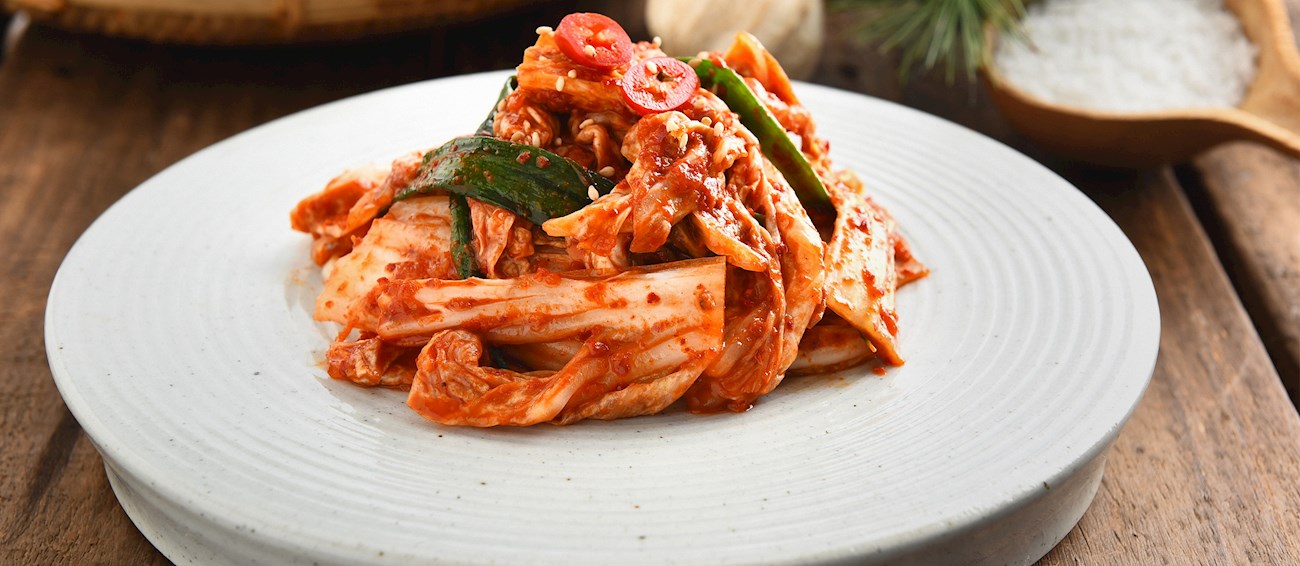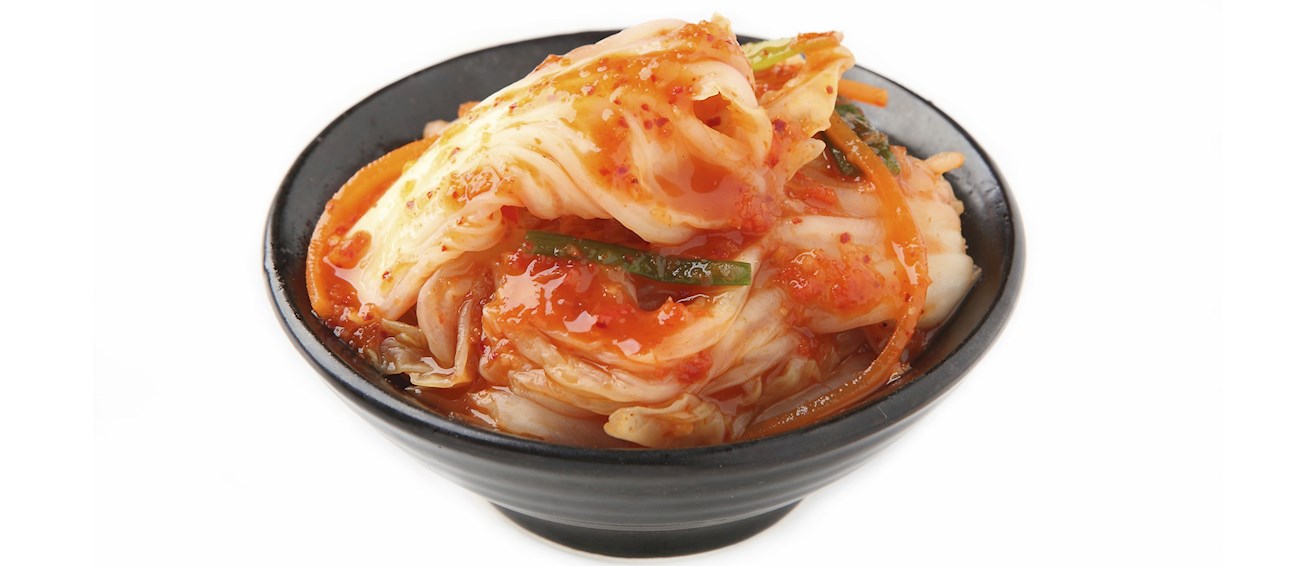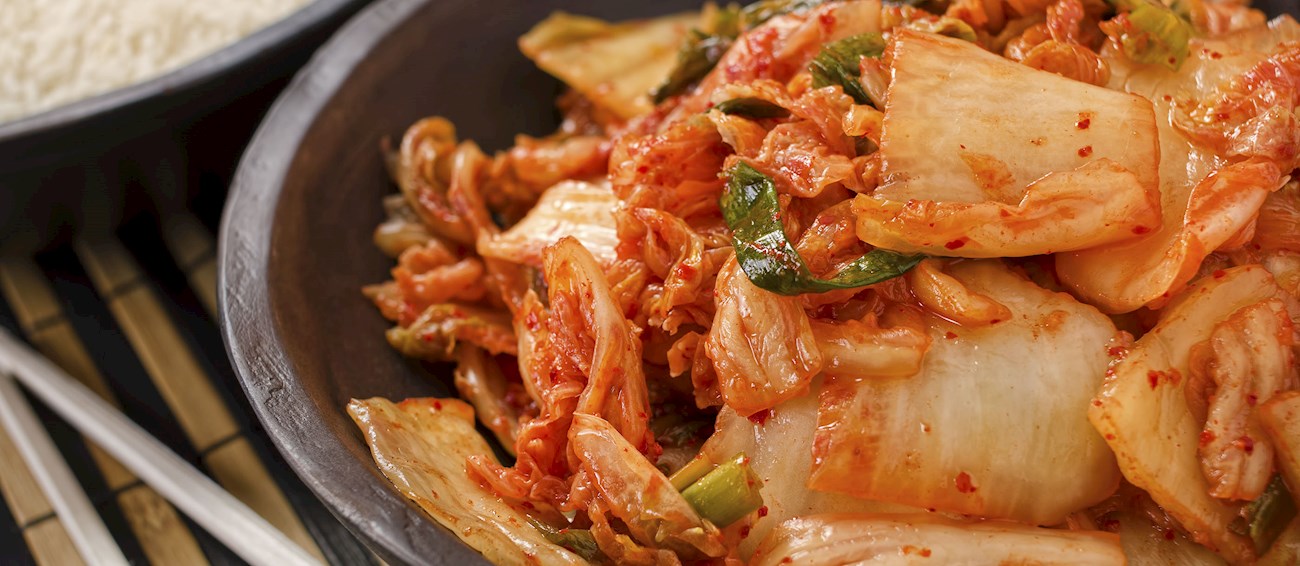Kimchi
(Gimchi, 김치)
Although many people get a chill through their spine at the very mention of the word pickles, Koreans have found a way to make fermented pickled vegetables interesting, tasty and titillating. A classic starter or a side dish to any Korean meal, these spicy, salty, sweet and sour vegetables known as kimchi start their way sliced, tied in bundles, and marinated in brine with hot chili peppers, salty fish paste, leeks, ginger, sugar, and garlic.
Although the popularity of kimchi is still rising in the West, it is an ancient dish, dating about two thousand years back, when it was first mentioned in written documents. It was originally called chimchae, literally translated to soaked vegetables, because kimchi was soaked only in brine or beef stock in the past, but by the 12th century, other ingredients and seasonings began to be added to the pot.
Nowadays, kimchi is made both in North and South Korea, the Southern version being more salty and spicy than the Northern one. Read more
Seasons also play a role in the flavors of kimchi - refreshing cucumber kimchi is popular in spring and summer, while winter kimchis may contain radish and mustard leaves. Due to its sharp and pungent odor, it is traditionally fermented outdoors, buried in barrels or crock pots.
Even though it is served as an appetizer, it usually stays on the table during the whole meal, accompanying classics such as bulgogi, kalbi, and mandu guk (dumpling soup), while cabbage kimchi is often fried into kimchijeon pancakes and incorporated into numerous soups and stews.
A staple of any Korean meal, the dish is so beloved that the locals even shout "kimchi!" when their picture is taken, in the same manner that Americans shout "cheese!".




